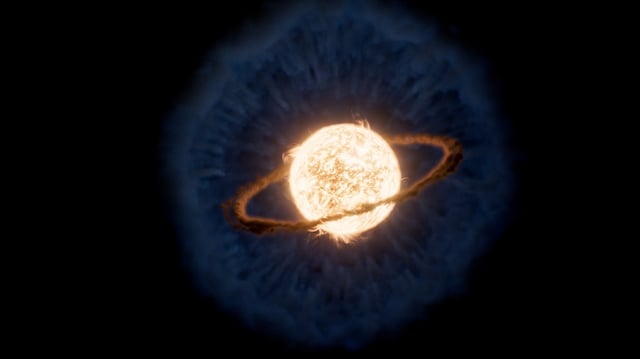Overview
- NASA’s James Webb Space Telescope has observed the first-ever recorded planetary engulfment, where a planet’s orbit decayed until it collided with its star.
- The event, named ZTF SLRN-2020, occurred 12,000 light-years away in the Milky Way and was first detected as a flash of light in 2020.
- New data confirms the star did not expand into a red giant; instead, the planet’s orbit gradually shrank before it grazed and was consumed by the star.
- Webb’s instruments detected a hot disk of molecular gas, including carbon monoxide, and a surrounding cloud of cooler dust formed from the planet’s destruction.
- These findings, published in *The Astrophysical Journal*, provide new insights into the end stages of planetary systems, with implications for our solar system’s future.

